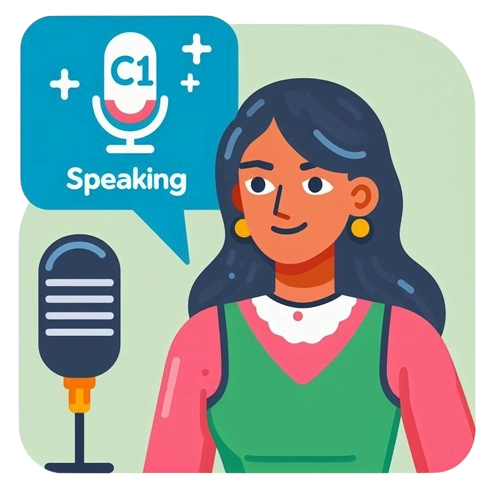Cambridge C1 (CAE) Writing Part 2: Guide to Writing the C1 Proposal

Key Points
To successfully write a C1 level proposal in the CAE exam, please do the following:
Step 1: Understand the Prompt
Step 2: Make an Outline
Step 3: Write the Introduction
Step 4: Write the Body Paragraphs
Step 5: Write the Conclusion
Step 6: Review and Edit
What you will find in this guide:
CAE Writing Part 2: The C1 Proposal
The second part of the Cambridge English: Advanced (CAE) writing exam offers candidates the flexibility to showcase their writing skills through one of three distinct tasks. Here’s a detailed guide to help you navigate this section successfully:
Before we dive into the nitty-gritty of writing part 2 of CAE, let’s take a look at the task options you will get.
n this section, you will be given a choice of three different tasks. You will need to select and complete one of the following:
- Letter/Email
- Proposal
- Report
- Review
Each task type requires a specific approach, style, and format. Understanding the nuances of each will help you tailor your response appropriately.
Your response in the second part of the Cambridge C1 Advanced (CAE) should be between 220 to 260 words. While there is no strict penalty for exceeding this limit, it is crucial to maintain clarity, conciseness, and precision. Quality over quantity is the guiding principle here.
Understanding the C1 Rubric
The Cambridge C1 Advanced Writing paper is scored based on four key criteria1:
- Content: This assesses how well you have fulfilled the task, if all the content is relevant to the task, and if the target reader is fully informed.
- Communicative Achievement: This checks if the writing is appropriate for the task, if it uses the right register and tone, and if all the points are communicated effectively.
- Organisation: This looks at the way the text is organised, if it uses the right conventions of the communicative task, and if the text is coherent and cohesive.
- Language: This assesses the range of vocabulary and grammatical structures, the level of accuracy in their use, and the appropriateness of the language to the task.
The Structure of Each Task Type
1. Letter/Email
Purpose: To write a text based on the given context, topic, and purpose, tailored to a specific target reader.
Structure:
- Salutation: Begin with an appropriate greeting.
- Introduction: State the purpose of the letter/email clearly.
- Body: Develop your main points in separate paragraphs.
- Conclusion: Summarize your main points and indicate any expected actions or responses.
- Sign-off: Use an appropriate closing phrase.
Language: Use formal or informal language depending on the target reader and context.
2. Proposal
Purpose: To suggest a plan or idea, with a clear structure and appropriate language, aimed at persuading the reader.
Structure:
- Introduction: State the purpose of the proposal.
- Background: Provide context or background information.
- Proposal: Present your suggestions or plans in detail.
- Benefits: Highlight the advantages or benefits of your proposal.
- Conclusion: Summarize your proposal and suggest the next steps.
Language: Use formal language, persuasive tone, and clear, concise points.
3. Report
Purpose: To create a report considering the conventions of the genre, often for a specific audience.
Structure:
- Title: Give your report a clear, descriptive title.
- Introduction: Outline the purpose and scope of the report.
- Main Sections: Divide the content into sections with subheadings.
- Conclusion: Summarize the findings and provide recommendations if applicable.
Language: Use formal, objective language and a structured format.
4. Review
Purpose: To share your evaluation or opinion on a given topic, such as a book, film, event, or product.
Structure:
- Introduction: Provide an overview of what you are reviewing.
- Summary: Summarize the key points or plot.
- Evaluation: Share your detailed evaluation, including positives and negatives.
- Conclusion: Give your final opinion and recommendation.
Language: Use semi-formal or informal language, engaging and descriptive style.
Potential Challenges
Writing Part 2 of the Cambridge C1 Advanced (CAE) Writing Paper can present several challenges. Here are some potential difficulties you might encounter:
Choice of Task: With three different tasks to choose from, deciding which one to tackle can be daunting. Each task requires a different style of writing and approach, which can be challenging if you’re not familiar with all the formats.
Understanding the Task: Each task has its own specific requirements. Misunderstanding the task can lead to a response that doesn’t meet the criteria, which can significantly impact your score.
Word Count: The word count for Part 2 is 220–260 words. Staying within this limit while ensuring you’ve fully addressed the task can be tricky. Overwriting can lead to unnecessary complexity, while underwriting might mean missing key points.
Time Management: With only 1 hour 30 minutes for both parts of the paper, managing your time effectively is crucial. Spending too much time on Part 1 can compromise your performance on Part 2, and vice versa.
Language Use: Part 2 tests your ability to use a range of language functions, grammatical structures, and vocabulary. This can be challenging if you’re not comfortable with the breadth of language required.
Register and Tone: Each task requires a different register and tone. For example, a formal tone is required for a proposal, while a more personal tone might be appropriate for an email. Misjudging the register and tone can lead to a response that doesn’t fit the task.
Sample Question
Write an answer to one of the questions 2-4 in this part. Write your answer in 220-260 words in an appropriate style.
2. Your company would like to offer work-experience placements to students in an international college. Write a letter for publication in the student newspaper at the college.
Your letter should explain what your company does, what kind of work-experience placements are available, and how students would benefit from the experience.
Write your letter.
3. A website has asked readers for reviews of new software applications. Write a review of an application that you have used. Your review should comment on what is special about the software. It should also explain who might find the software most useful or appealing and why. Your review should also suggest one way in which the software could be improved.
Write your review.
4. Your local city council is investigating whether the city centre meets the needs of the city ‘s inhabitants. You have been asked to write a report for the council.
Your report should discuss the entertainment and restaurant facilities in the city centre from the point of view of people of your age group. It should also describe at least one way in which the city centre could be improved to meet your age group’s needs more effectively.
Write your report.
How to Overcome Challenges:
To Address the Lack of Ideas and Time Constraint Issues:
Create an Outline: Develop the habit of outlining your essay before writing to minimize thinking time during the exam.
Read More Essays: Read as many essays, on as many topics, as possible. By reading more essays you can familiarize yourself with different arguments and example ideas for various essay topics.
Regular Practice: Practice responding to diverse essay prompts regularly to enhance idea-generation skills.
To Address Grammatical Accuracy:
Practice with Feedback: Regularly practice essay writing with a teacher or language partner to receive corrective feedback on grammar and sentence structure.
Review and Edit: Allocate time at the end of the exam to review and edit your essay, focusing on correcting grammatical errors.
To Address the Vocabulary and Grammar Issues:
Diversify Vocabulary: Expand your vocabulary by reading a variety of materials to improve the effective use of diverse words.
Seek Expert Feedback: Seek feedback from teachers or language experts to refine the use of complex sentence structures and uncommon words in your essays.
Guide to Writing the Proposal in Part 2
Writing a proposal involves presenting an idea, project, or plan in a clear and persuasive manner to gain approval or support. Here’s a comprehensive step-by-step guide to help you craft an effective proposal:
Step 1: Understand the Purpose and Audience
– Determine the primary goal of your proposal. Are you seeking funding, approval, partnership, or support?
– Identify who will be reading your proposal. Understanding your audience helps tailor the content and tone to their interests and concerns.
– Understand the background of the problem or need your proposal addresses. Collect relevant data, statistics, and information.
– Identify key stakeholders and their interests or concerns. This can help in addressing potential objections.
– Determine what resources (time, money, personnel) are needed for your proposal and how they will be used.
Step 2: Create a Proposal Outline
Introduction:
– Briefly state the purpose and scope of the proposal.
Background/Problem Statement:
– Explain the context and significance of the problem or need you aim to address.
Objectives:
– Clearly outline the goals and objectives of your proposal.
Methodology/Plan:
– Describe the steps, strategies, or methods you will use to achieve your objectives.
Benefits:
– Highlight the expected outcomes and benefits of your proposal.
Budget:
– Provide a detailed budget, including a breakdown of costs and justification for each expense.
Conclusion:
– Summarize the key points and emphasize the importance of your proposal.
Step 3: Write the Proposal
Introduction:
– Opening Statement: Start with a compelling statement that grabs attention.
– Purpose: Clearly state the purpose of the proposal.
– Overview: Provide a brief overview of what the proposal entails.
Background/Problem Statement:
– Context: Describe the context and background of the issue.
– Significance: Explain why this issue is important and needs addressing.
– Evidence: Use data, statistics, or case studies to support your claims.
Objectives:
– Clear Goals: List the specific objectives you aim to achieve.
– Measurable Outcomes: Ensure the objectives are measurable and time-bound.
Methodology/Plan:
– Detailed Steps: Outline the steps you will take to achieve the objectives.
– Timeline: Provide a timeline for each phase of the project.
– Resources Needed: Specify the resources required and how they will be utilized.
Benefits:
– Positive Impact: Highlight the positive impact and benefits of your proposal.
– Stakeholder Benefits: Explain how different stakeholders will benefit.
Budget:
– Detailed Breakdown: Provide a detailed breakdown of costs.
– Justification: Justify each expense and show how funds will be allocated efficiently.
Conclusion:
– Summary: Summarize the key points of your proposal.
– Call to Action: Encourage the reader to take action or approve your proposal.
– Closing Statement: End with a strong, persuasive closing statement.
Step 4: Review and Revise
**Proofreading:**
– Check for spelling, grammar, and punctuation errors.
Clarity and Conciseness:
– Ensure the proposal is clear, concise, and free of jargon.
Consistency:
– Make sure the formatting, style, and tone are consistent throughout the document.
Tips for Success
Understanding the rubric is the first step. Here are some tips to help you excel:
- Practice: Regular practice can help you get familiar with the format and expectations of the paper.
- Feedback: Seek feedback on your writing from a teacher or a knowledgeable friend. They can provide valuable insights on areas of improvement.
- Self-assessment: Try to assess your own work using the rubric. This can help you understand the criteria better and improve your writing skills.
Sample C1 Essay Question and Answer
You feel that Establishing a Community Garden can significantly improve your neighborhood. You decide to write a proposal for the town council explaining why you think such a garden should be built.
Sample Answer
Proposal for Establishing a Community Garden
Introduction
Creating a community garden is a transformative project aimed at enhancing the well-being of our community. This proposal outlines the plan to establish a community garden that will provide residents with access to fresh produce, promote physical activity, and foster social interaction.
The Problem
Our neighborhood currently lacks sufficient green spaces and access to fresh, affordable produce. Many residents live in apartments or homes with limited or no gardening space, restricting their ability to grow their own fruits and vegetables. The establishment of a community garden will address several critical issues: encouraging healthier eating habits and regular physical activity, providing a communal space for residents to gather and build stronger community bonds, and enhancing local biodiversity.
Methodology and Plan
To achieve this, we have identified a vacant lot at the corner of Maple Street and 5th Avenue as the ideal location for the community garden. The garden will be designed with raised beds, accessible paths, and communal areas. The implementation plan includes site preparation, garden setup, and ongoing maintenance. We will engage residents through workshops and volunteer committees.
Conclusion
The proposed community garden will bring numerous benefits, including improved health, stronger community ties, and a greener urban environment. We urge the community and local authorities to support this initiative. Together, we can create a vibrant, sustainable garden that will enrich our lives and environment for years to come.
References
Your Experience
How was your experience preparing for Cambridge C1 Advanced CAE writing part 1? Did you find writing the essay easy or difficult? Share your experience in the comment section below.






